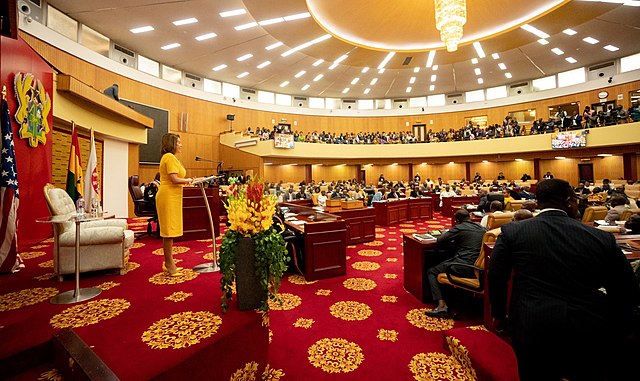
As the semester comes to an end, temperatures have dropped, over-sized sweaters have become socially acceptable, and holiday music has begun to monopolize our radio stations. The holiday season has undeniably arrived.
The Jewish holiday of Hanukkah begins this Saturday night, on the 25th day of the Hebrew month of Kislev. While Hanukah has gained fame in American life due to Adam Sandler’s lyrical genius, there is more to the holiday than “put[ting] on your yarmulke.” Hannukah provides an excuse for Jewish families to gather together for yet another festive occasion (in case Thanksgiving wasn’t enough), and also happens to have between 15 and 17 different English spellings, which I will illustrate throughout this column.
The story behind Chanukkah is an archetypal Jewish tale of religious oppression, resilience and triumph. When the Jews were living under Greco-Syrian rule in the second century B.C., the Seleucid king, Antiochus IV, seized control of the Jewish Temple in Jerusalem and forced the Jews to abandon their religious practices. In response, a group of rebels led by Judah the Maccabee rose up in revolt, and triumphantly reclaimed and re-dedicated the Temple on the 25th of Kislev, 164 B.C. Hanukka, the Hebrew word for “dedication,” commemorates this day.
According to legend, shortly after the Maccabees reclaimed the Temple they witnessed a miracle: the Temple’s Menorah, or candelabrum — which is supposed to be lit continuously as a symbol of God’s constant presence — had only enough oil to last one day. Yet, miraculously, the oil lasted for a full eight days until it was able to be replenished.
To commemorate the miracle of the oil, Jewish families light a menorah on each of the eight nights of Channukah. One candle is lit on the first night, two are lit on the second night, and so on — up until the eighth night, when pyromaniacs rejoice as all eight candles are lit. The candle-lighting is often accompanied by blessings and joyous songs. Due to the significant role of candle-lighting in its observance, Hannukah — along with the African-American holiday of Kwanzaa and Indian holiday of Diwali — has become known as “The Festival of Lights.”
The miracle of the oil is further celebrated by feasting on food fried in oil. Latkes, or potato pancakes, are the quintessential Chanukka delicacy (usually served with apple sauce or sour cream), while jelly doughnuts are often enjoyed as well.
Notably, although the Hanukka story is one of military triumph, the holiday’s traditions ultimately focus on the miracle of the oil rather than the Jewish victory over the Greeks. The holiday thus emphasizes an affirmation of life’s miracles rather than the glorification of war.
A popular Channuka tradition for children is the spinning of the dreidel, a square spinning top with a Hebrew letter printed on each of its four sides. The four letters, Nun, Gimmel, Heh, and Shin, comprise an acronym for the Hebrew phrase Nes Gadol Hayah Sham which translates as “A Great Miracle Happened There.” The dreidels sold in Israel are subject to a slight alteration: the last letter is fittingly changed to a “Pe” so that the letters stand for Nes Gadol Hayah Po, or “A Great Miracle Happened Here.”
When children tire of simply spinning the dreidel and watching it land on its side, they partake in a competitive gambling game in which they place high stakes in the whimsical toy to land on certain letters and win them the greatest number of chocolate coins, otherwise known as Channukka gelt.
For children not old enough to gamble, dreidels come in many exciting varieties that create their own diversions. These varieties include singing dreidels, dreidels that flip upside down, magnetic dreidels, optical illusion dreidels, and dreidels filled with candy. A singing dreidel that I received when I was four continues to screech out a decipherable melody 16 years (and who knows how many spins) later — even though the battery has never been changed. And that is my own personal Hannukkah miracle.
Despite its relatively low religious significance, Chanuqa has emerged as one of the most highly celebrated holidays among American Jews, which may or may not be due to the holiday’s proximity to Christmas. Nevertheless, amid the harsh cold of winter, the glow of the candles, sizzle of the latkes cooking in the frying pan, and uplifting sounds of song and laughter instantly evoke feelings of warmth and joy.
I wish you all a splendid holiday season and a Chag Chanukah Sameach. Also, please let me know if we can reach a consensus on how to spell this thing.
Merav Kaufman is a Collegian columnist. She can be reached at [email protected].








![By freestocks.org [Creative Commons Zero], via Wikimedia Commons](https://dailycollegian.com/wp-content/uploads/2024/04/Picture1-1.png)



pmi • Jul 3, 2013 at 10:06 am
I am extremely impressed along with your writing skills and also with the format in your blog. Is this a paid theme or did you customize it yourself? Anyway keep up the nice high quality writing, it is uncommon to look a nice blog like this one these days..
Isaac Himmelman '12 • Jan 9, 2013 at 2:04 pm
Great article Merav. Keep it up! Be safe.
David • Dec 9, 2012 at 6:28 pm
Chag Urim Sameach! Thanks for your informative, meaningul and well written article.
A school parent from Sharon.
David Hunt '90 • Dec 7, 2012 at 9:42 am
Chag Sameach Merav – Am Yisrael Chai!